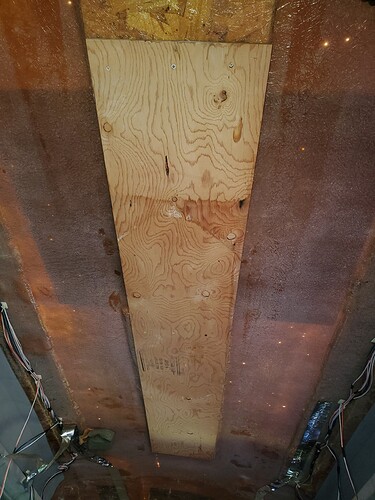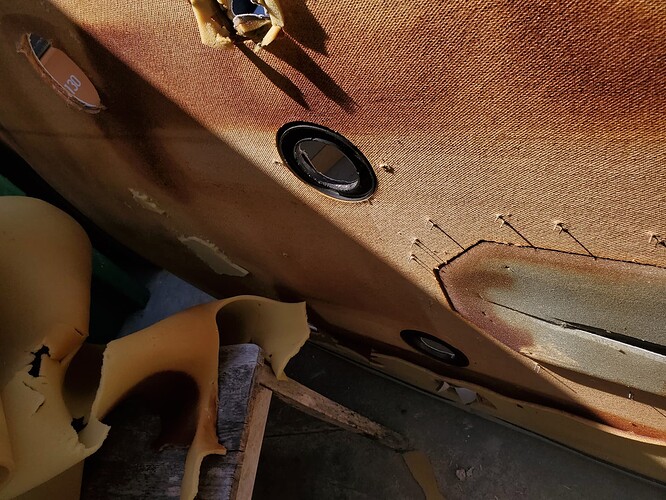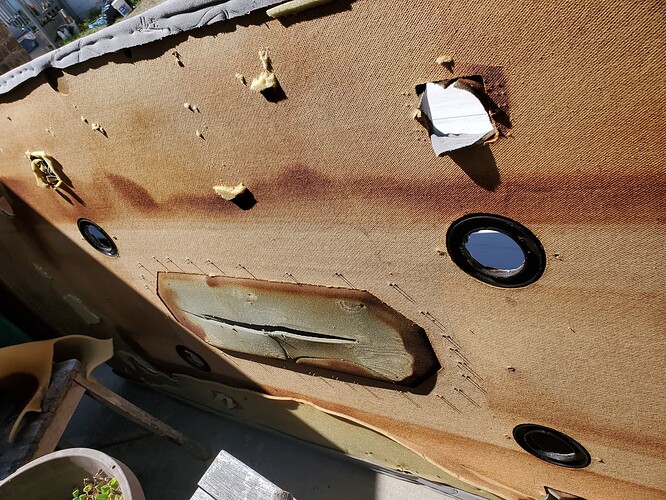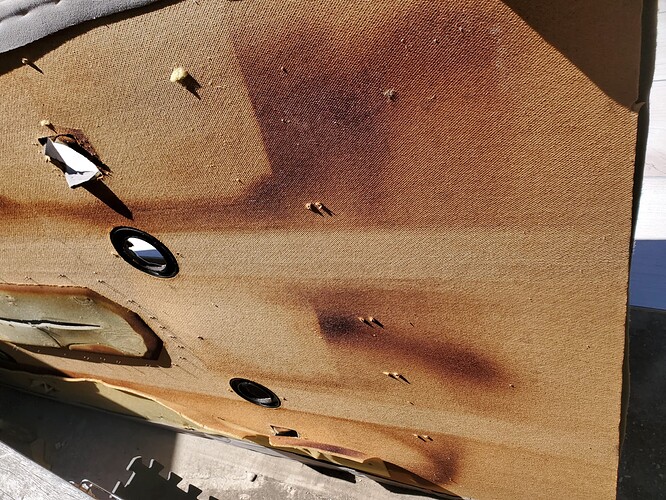Hi y’all. I just took the old ceiling out of my 2002 Chevy Express 1500 Explorer conversion van. The ceiling is constructed of masonite with a thin layer of foam between the fiberglass roof and the masonite ceiling. There are 4 light fixtures, 2 speakers, and 2 rectangular ducts that line the sides (between the foam and masonite) with four vents to blow AC and heat.
When we removed the ceiling, there are what look like scorch marks on the foam and the masonite. Could be water damage or age, but the masonite doesn’t look warped like I expect it would from water damage.
I suspect much of the issue is coming from the ducts based on the patterns, but even that isnt super clear. The foam right behind the speakers was pretty darkened as well. The fiberglass roof does not have these marks.
Does anyone have experience with this type of van, and seen this before? Is this just normal from the foam doing its job over the past 20 years insulating hot components? If so, do I need to replace the foam with a specific type of foam? Or will fire resistant (Class A) sheep’s wool work just as well?
Thanks in advance for any help. Photos attached.
Greetings!
That looks like moisture marks to me, probably from condensation. The foam was designed to keep the moisture away from the skin, and vent it to the interior where it could dry out. It was probably working properly.
Whatever you replace it with needs to have the same characteristics, to wick the moisture to the interior and away from the outer skin. Otherwise the moisture can get trapped and cause rust & mold.
I don’t really know if the sheep’s wool will wick it properly or not. It will wick moisture away from your body, to the outside air to evaporate, but when the wool is enclosed, and not exposed to the outside air, it’s hard to say exactly what your results will be.
Cheers!
"Be the reason someone smiles today!" ~ Van_Dweller
Thanks for your help! That makes sense. I was thinking about putting the thin layer of foam back between the wool and the roof. But it looks like I’ll have to find the same type of foam to replace it with because this foam is toast.
Greetings!
Hopefully somebody with wool experience will chime in as to how exactly it works. Just the wool might be enough. 
Cheers!
"Be the reason someone smiles today!" ~ Van_Dweller
I think you kinda already guessed it.
Marks like that can come from years exposed to summer heat.
In some places, the roof of the vehicle can reach 190F in the Summer heat and Sun.
Those marks can sometimes result from fabrics and other materials being heated repeatedly in the hot summer heat. Combine that with moisture from humidity and oils from human hair, smoking etc and you can get some strange results.
The darker the patch, the closer to the roof steel and the hotter it got.







